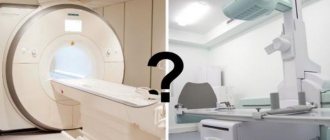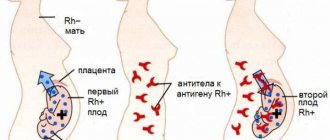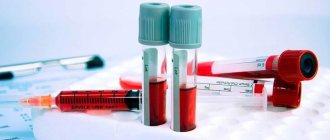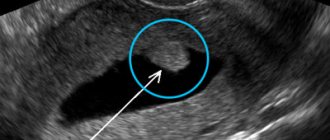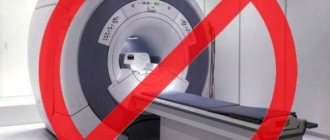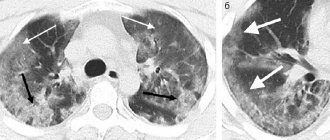Pneumonia is an infectious inflammatory disease of lung tissue. Another common name for the disease is pneumonia.
Currently, pneumonia (pneumonia) is successfully treated in the vast majority of cases. To be sure of a successful outcome, it is enough to consult a doctor in a timely manner and strictly follow the recommendations received. However, we should not forget that pneumonia is still a serious disease, and in the absence of proper treatment can lead to the death of the patient.
Causes of pneumonia
The most common cause of pneumonia is a bacterial infection. In 30-40% of cases, the causative agent of pneumonia is pneumococcus (a type of streptococcal infection). In addition to bacteria, pneumonia can also be caused by viruses, mycoplasmas, and chlamydia.
Typically, the pathogen enters the lungs aerogenously - with inhaled air. But it is also possible for an infection to enter the bloodstream from an already existing source of inflammation (for example, with peritonitis). The penetration of infection through the upper respiratory tract also in most cases occurs progressively - first, a focus of inflammation appears in the nasopharynx or throat, and only then from there the infection “descends” to the lungs. Thus, any viral disease of the upper respiratory tract (ARVI, influenza) can become a trigger for the development of pneumonia, since viral damage creates favorable conditions for the activation of pathogenic bacteria. If you have tracheitis or bronchitis, you must be observed by an experienced doctor in order to prevent or promptly detect the penetration of infection into the lungs themselves.
Factors contributing to the occurrence of pneumonia (pneumonia)
In some cases, the risk of pneumonia increases. Children are the most vulnerable (due to underdeveloped immunity, respiratory muscles, narrower and shorter airways). Also, pneumonia often develops in older people (over 60 years old), this is associated with age-related weakening of the immune system, loss of muscle tone and low mobility.
Factors that increase the risk of pneumonia also include:
- chronic diseases of internal organs (kidneys, heart) in the acute stage;
- oncological diseases;
- endocrine diseases (diabetes mellitus);
- diseases of the central nervous system (including epilepsy);
- weakened immune system;
- constant stress, depression;
- poor nutrition (insufficient consumption of fruits, vegetables, fish, meat);
- hypothermia;
- smoking;
- alcohol abuse.
Full recovery
— At the beginning of June this year, the Sverdlovsk region developed a procedure for medical rehabilitation of patients who suffered from coronavirus. Does it still apply?
— This rehabilitation program is in effect, but it is advisory in nature. Now in our region there are several centers for the rehabilitation of patients after coronavirus. Those who have had moderate or severe COVID-19 and who have had changes in the lung tissue often require rehabilitation of the respiratory system, which includes a special set of exercises and breathing exercises. If a person who has recovered from coronavirus experiences an exacerbation of his chronic diseases, then he is referred for rehabilitation to an appropriate specialist.
— Is it possible to completely restore the lungs after they are damaged by coronavirus?
— Of course, but in general, recovery depends on the extent of lung damage and the age of the patient. If a young man does not have chronic diseases and his lungs were affected by less than 25 percent, then he will recover in a month, and the disease will pass without a trace for him. We see a clear positive trend in the condition of the lungs already four weeks after the end of treatment for coronavirus in a patient with pronounced changes in lung tissue who suffered a serious illness from COVID-19. In general, lung recovery takes from four weeks to six months.
IMPORTANT
Due to an increase in the number of people calling on coronavirus issues to the hotline of the Office of the Federal Service for Supervision of Consumer Rights Protection and Human Welfare in the Sverdlovsk Region, the agency has organized the operation of additional telephone numbers.
You can contact specialists regarding the following questions: – algorithm of actions in case of receiving a positive result for COVID-19;
– contact insulation;
– disinfection of COVID-19 outbreaks;
– prevention of coronavirus;
– in case a Rospotrebnadzor employee has not contacted a COVID-19 patient or a contact.
List of new hotline numbers for COVID-19 in the Sverdlovsk region:
Ekaterinburg
| (343) 350-21-64 (343) 374-16-59 on the weekend 8-952-142-91-51 |
Ekaterinburg
Berezovsky Upper Pyshma | (343) 307-40-77 (343) 307-42-99 (343) 307-40-40 |
Ekaterinburg
Polevskoy Sysertsky district | (343) 266-55-21 (343) 266-55-15 |
| Alapaevsk and Alapaevsky district Rezhevskaya district Artyomovsky district | (34346) 3-18-66 (34346) 3-20-69 |
| Asbestos Beloyarsky district | 8-902-260-30-13 (34365) 2-48-18 |
| Irbit and Irbitsky district Slobodo-Turinsky district Tavdinsky district Taborinsky district Turin district | (34355) 6-36-45 (34360) 5-34-87 |
| Kamensk-Uralsky and Kamensky district Sukholozhsky district Bogdanovichsky district | (3439) 36-43-84 (3439) 37-87-08 (3439) 36-48-22 |
| Kachkanar and Kushva Krasnouralsk Nizhnyaya Tura | (34344) 2-60-03 (34341) 6-35-21 |
| Krasnoufimsk and Krasnoufimsky district Artinsky district Achitsky district | (34394) 7-59-43 (34394) 7-59-40 |
| Nizhny Tagil and Suburban district Verkhnesaldinsky district Nizhnyaya Salda Kirovgrad Nevyansky district | 8-912-689-91-27 |
| Pervouralsk Revda Shalinsky district Nizhneserginsky district | 8-800-222-45-60 (3439) 24-51-17 |
| Severouralsk Ivdel Krasnoturinsk Karpinsk | (34380) 2-34-56 (34384) 6-30-61 (34384) 6-48-41 |
| Serov and Serovsky district Garinsky district Verkhotursky district Novolyalinsky district | 8-908-900-39-77 8-952-734-02-10 8-908-913-00-89 |
| Talitsky district Baikalovsky district Tugulymsky district Kamyshlov and Kamyshlovsky district Pyshminsky district | (34371) 2-18-98 (34375) 2-05-80 |
Prepared in accordance with the criteria approved by the order of the Department of Information Policy of the Sverdlovsk Region dated 01/09/2018 No. 1 “On approval of the criteria for classifying information materials published by government agencies of the Sverdlovsk Region, in respect of which the functions and powers of the founder are exercised by the Department of Information Policy of the Sverdlovsk Region, as socially significant information."
- Published in No. 202 dated 10.28.2020
Types of pneumonia
Depending on the degree of damage to the lung tissue, focal pneumonia
(when only a small focus of the lung is affected - for example, the bronchi with adjacent respiratory sections, this form of the disease is called
bronchopneumonia
),
segmental
, affecting one or more segments of the lung, and
lobar
, occurring with damage to the lobe of the lung (this form is also called
lobar pneumonia
; in inflammatory the process in this case may also involve the pleura - the membrane covering the lungs). Focal pneumonia is relatively mild, and lobar pneumonia is the most dangerous form of the disease.
If only one lung is involved in the inflammatory process, such pneumonia is called unilateral. Bilateral pneumonia, that is, inflammation of both lungs at once is much more severe.
Inflammation of the lungs caused by atypical microflora (mycoplasmas, chlamydia) is called atypical pneumonia
. The course of atypical pneumonia is significantly different (in particular, its primary manifestations may coincide with a common cold).
Read in this article:
- What is pneumonia like?
- Signs of pneumonia
- How to recognize the disease?
- How is pneumonia diagnosed?
- When should you see a doctor?
- Ways to protect yourself from pneumonia
Pneumonia or pneumonia is an infectious disease that affects the alveoli of the lungs. These are small bubbles located on the branches of the bronchi and connected by capillaries to the circulatory system. Normally, oxygen passes through the bronchi into the alveoli, and then into the blood. With an infection, the blisters increase in size, filling with pus or fluid. Accordingly, the supply of oxygen to the body is reduced.

Pneumonia in children
Children in the first years of life are more likely to suffer from pneumonia than adults. This is explained, first of all, by the fact that the respiratory system of babies is still developing, and therefore has a number of features that make it especially vulnerable, such as:
- immature lung tissue;
- narrow and short airways;
- small lung capacity;
- the mucous membrane of the respiratory tract quickly swells, and weak and fragile cilia of the epithelium do not remove mucus well.
Atypical pneumonia is common in children. Pathogens that relatively rarely cause pneumonia in adults - viruses, mycoplasmas, chlamydia, when entering the child's respiratory system, easily cause pneumonia. This means that the disease may not proceed in the same way as we are used to seeing in adults. Therefore, parents should be especially vigilant and not miss the onset of the development of the disease. You can suspect pneumonia in a child if some of the following signs are combined:
- high temperature (38°C and above) that lasts more than 3 days;
- shortness of breath (rapid breathing);
- pallor and blueness of the nasolabial triangle (the nasolabial triangle is the area that includes the nose from the base of the bridge of the nose, bounded below by the mouth, and on the sides by the nasolabial folds);
- unreasonable sweating;
- weakness and refusal to eat.
With atypical pneumonia, the cough may be absent or seem superficial. The main symptom of the disease is a combination of persistent high temperature and shortness of breath.
Symptoms of pneumonia
In most cases of bacterial infection, the onset of the disease is acute. Atypical pneumonia caused by mycoplasmas, chlamydia, and legionella has a vague onset, similar to a common cold.
In the typical course of pneumonia, the main symptoms are:
Temperature
Pneumonia is typically characterized by a significant increase in body temperature (from 37.5°C to 39.5°C and above)
More about the symptom
Symptoms of intoxication
The complex of symptoms of intoxication during pneumonia includes headache, weakness, excessive sweating, and loss of appetite.
Cough
The cough of pneumonia is usually dry at the beginning, but after 3-4 days it becomes wet, producing copious sputum of a reddish or greenish color.
More about the symptom
Dyspnea
The larger the lesion, the stronger the shortness of breath. Inhalation is especially difficult.
More about the symptom
Chest pain
The pain intensifies with coughing and deep breathing.
More about the symptom
Methods for diagnosing pneumonia
Diagnosis of pneumonia is based on examination of the patient. Tapping (percussion) and listening (auscultation) are required to detect noise in the lungs. Laboratory and instrumental tests may also be prescribed.
General blood analysis
A general blood test will detect signs of inflammation. The main changes are an increase in the number of leukocytes and ESR.
More information about the diagnostic method
Sputum culture
Cultural studies are being carried out. Sputum culture allows you to identify the pathogen that caused the inflammation.
Microscopic examination
Microscopic examination of sputum with Gram staining makes it possible to detect the presence of gram-negative microorganisms. It is gram-negative pathogens that cause atypical pneumonia, which occurs in the most dangerous manner for the patient.
PCR diagnostics
If atypical pneumonia is suspected, PCR diagnostics is performed. The biological material being studied is sputum. PCR testing allows us to accurately identify the presence of the pathogen and confirm the diagnosis.
More information about the diagnostic method
Chest X-ray
X-ray of the lungs allows you to identify foci of inflammation, clarify their location and size, and detect complications (lung abscess).
More information about the diagnostic method
Bronchoscopy
For complicated forms of pneumonia, bronchoscopy can be performed. The method involves inserting a special endoscopic instrument, a bronchoscope, through the nose into the lumen of the trachea. The bronchoscope is equipped with illumination and an optical system that allows the doctor to see the situation with his own eyes.
Sign up for diagnostics To accurately diagnose the disease, make an appointment with specialists from the Family Doctor network.
When should you see a doctor?
If chest pain and other signs of pneumonia occur, it is especially important to immediately consult a doctor for people:
- Over 65 years old;
- With chronic respiratory diseases and other serious pathologies (obstructive bronchitis, liver cirrhosis, diabetes, heart failure);
- With weakened immunity, immunodeficiency conditions;
- Staying in bed for a long time;
- With bad habits (smoking, alcohol).
The risk group also includes young children, so when the first symptoms of the disease appear, you should immediately consult a doctor.
Treatment methods for pneumonia
A patient with suspected pneumonia should be examined by a doctor. In “Family Doctor” you can call a general practitioner or pediatrician to your home.
Patients are prescribed bed rest. Severe forms of pneumonia require hospitalization. In case of mild pneumonia, treatment is carried out at home, but always under the supervision of a doctor.
The patient needs plenty of fluids (preferably warm) and a rational diet, excluding fatty foods and sweet dishes. The room where the patient is located must be regularly ventilated and wet cleaned.
Family Doctor doctors have extensive experience in diagnosing and treating pneumonia. By being seen at the Family Doctor, you will reduce the risk of complications and relapse of the disease.
Drug treatment
Drug treatment is aimed primarily at suppressing the causative agent of the disease. Measures are also usually taken to reduce the temperature and clear the respiratory tract of phlegm.
Physiotherapy
Physiotherapy is prescribed after the temperature has normalized. Methods such as UHF therapy, electrophoresis, UV irradiation and some others are used. It is also useful to undergo a massage course.
More information about the treatment method
Physiotherapy
Physical therapy is resorted to after the temperature has normalized. The purpose of exercise therapy for pneumonia is to strengthen the general condition of the patient, improve blood circulation, prevent the formation of pleural adhesions, and strengthen the heart muscle.
More information about the treatment method
Make an appointment Do not self-medicate. Contact our specialists who will correctly diagnose and prescribe treatment.
Rate how useful the material was
thank you for rating


